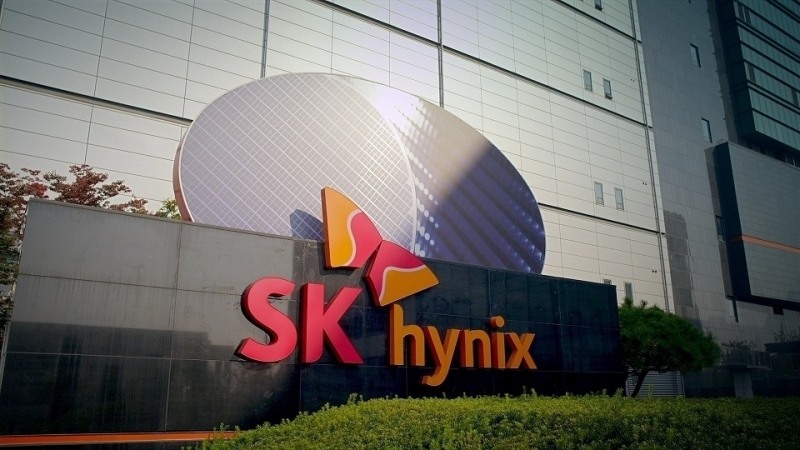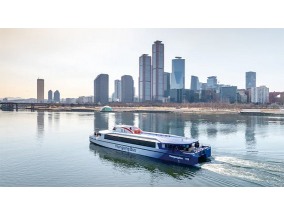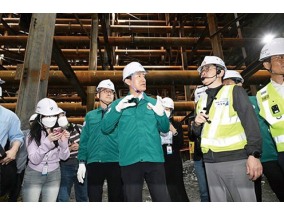According to industry sources on the 9th, Japanese memory semiconductor company Kioxia is scheduled to list on the Tokyo Stock Exchange on the 18th. Currently, the exchange has approved it, and its expected market capitalization is approximately 750 billion yen (approximately 6.8 trillion won).
In 2018, SK hynix invested approximately KRW 4 trillion in Kioxia through a Bain Capital consortium. The investment was made by participating as an investor in a fund created by the consortium and acquiring Kioxia's convertible bonds (CBs). This will allow SK hynix to maintain a 15% voting stake in Kioxia until 2028. After that, it can increase its stake through equity investment.
When Kioxia launched its IPO in 2020, expectations for SK hynix's exit were high. At the time, Kioxia's listing in Japan was expected to be the largest IPO since SoftBank's in 2018, with some speculating that SK Hynix would benefit.
However, SK Hynix's investment recovery was also in doubt as Kioxia withdrew its IPO due to the worsening business conditions caused by COVID-19. Kioxia returned to the IPO game the following year in 2021, but this time it was delayed again due to the US-China trade conflict and the downturn in the nand industry. Afterwards, in August of this year, it applied for an IPO at the Tokyo Network Exchange and attempted its third attempt. But this time it was postponed after Japanese financial authorities demanded that the IPO target amount be lowered. In the end, Kioxia was granted listing approval after a series of twists and turns, including accepting the authorities' demands.
With Kioxia's listing on the horizon, the possibility of an SK Hynix exit has gotten renewed attention. However, some in the industry say there is no immediate urgency for SK hynix to exit. This is because SK hynix is in a much different situation than when it invested in Kioxia. Instead, there is an opinion that exercising influence as a major shareholder of a major competitor can benefit more.
At the time of SK hynix's investment in Kioxia, Samsung Electronics was overwhelmingly in first place in the global NAND market, and SK Hynix, Kioxia, Western Digital, and Micron were fiercely fighting for second place with similar shares of around 10%. Today, however, SK Hynix is the undisputed No. 2 in the industry (~20% share), thanks to its acquisition of Intel's NAND business in 2020. Now, it is in a situation where it must chase Samsung Electronics (46%) in the NAND market while also keeping the lower runners in check.
Moreover, as SK hynix is making great progress in AI semiconductors such as HBM (high bandwidth memory), there is less pressure on the company to improve its financials and recover investment losses through an exit. TThere were voices in the industry concerned that the longer Kioxia's IPO was delayed, the more SK Hynix would lose its investment assets. According to SK Hynix's semi-annual report this year, the valuation loss on Kioxia's special purpose corporation is approximately KRW 191.2 billion.
On the other hand, SK hynix's net profit for the first half of the year, which includes impairment losses on investment assets, was KRW 6.037 trillion. While this is not as high as the first half of 2018 (KRW 7.4499 trillion), which was the peak of the semiconductor boom, it is a modest recovery considering that the company posted an annual loss in 2023. In particular, SK Hynix's net profit for the third quarter was KRW 5.7534 trillion, the highest quarterly figure ever. The company's cash and cash equivalents at the end of the third quarter of this year were also approximately KRW 10 trillion, which is more than during the semiconductor boom (approximately KRW 8 trillion).
A SK hynix official was coy about the future exit of Kioxia, saying that the company is "We are reviewing various options from various angles."
Kim JaeHun (rlqm93@fntimes.com)
[관련기사]
가장 핫한 경제 소식! 한국금융신문의 ‘추천뉴스’를 받아보세요~
데일리 금융경제뉴스 Copyright ⓒ 한국금융신문 & FNTIMES.com
저작권법에 의거 상업적 목적의 무단 전재, 복사, 배포 금지









![용산구 ‘나인원한남’ 88평, 9억 상승한 167억원에 거래 [일일 아파트 신고가]](https://cfnimage.commutil.kr/phpwas/restmb_setimgmake.php?pp=006&w=284&h=214&m=5&simg=2025071010042800278b372994c952115218260.jpg&nmt=18)










